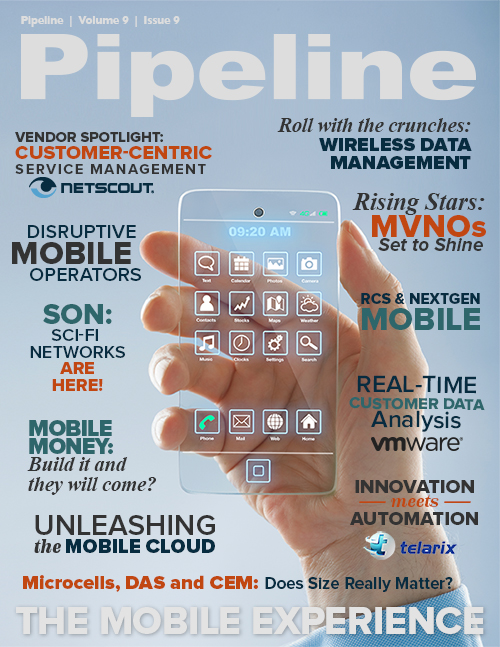SON: Sci-Fi Networks Are Here
According to Infonetics, The SON market is set to double in 2013, driven by operators looking to automate LTE rollout, led by AT&T.
Automation provides a significant number of benefits that the operators polled by Infonetics havenât recognized yet. An automated, plug-and-play environment without a lot of manual tuning and
configuration is ideal for the speedy rollout of new services. But are operators ready to give up that much control of their networks? Most SON solutions directly address this concern.
âAutomation is all about âliberatingâ from tedious and costly work,â says Lukasz Mendyk, OSS product manager at Comarch. âBut automation also means autonomy, so there is an issue [of] how to
assure that the network is doing what operators want. Operators still need to control the network, but in SON, instead of defining all configuration items, operators should shift to controlling
the network by defining criteria and goals that SON must obey. These criteria should be of the end-to-end [variety] to avoid a situation [in which] automated optimization in one part of the
network is achieved by introducing inefficiency in another part of the network.â
Some SON solutions include features specifically designed to calm operatorsâ nerves. âOpen Loopâ is one example.
âThe âOpen Loopâ mode includes validation steps prior to allowing configuration changes in the network,â says de Bazignan. âWith this step, engineering teams can approve or deny improvements
suggested by their solution and thus remain in control. This choice of implementation can be helpful in removing the perceived risks brought on by implementing network optimization
automation.â
It also frees up time for engineers to concentrate on more important tasks, such as further automation processes that can gain their companies a competitive advantage. âAs an example, an
engineering team could automate coverage, capacity or performance optimization and then focus the majority of their attention on implementing automatic outage detection and compensation
capabilities, or dynamic load balancing and hotspot mitigation automation,â de Bazignan says. âEffectively, engineering teams can ease into the network optimization solution, which often helps
reduce the anxiety that many felt when SON was first introduced.â
But Riina Luoma of Nokia Siemens Networks reminds operators that SON algorithms are designed to be caretakers of the network rather than some out-of-control, destructive force.
âSON algorithms are by nature altruistic, programmed to take care of a certain aspect of the network settings and performance,â she says. âSON operations is the âorchestra leader function,â
knowing when and where the SON algorithms play their tunes.â



















